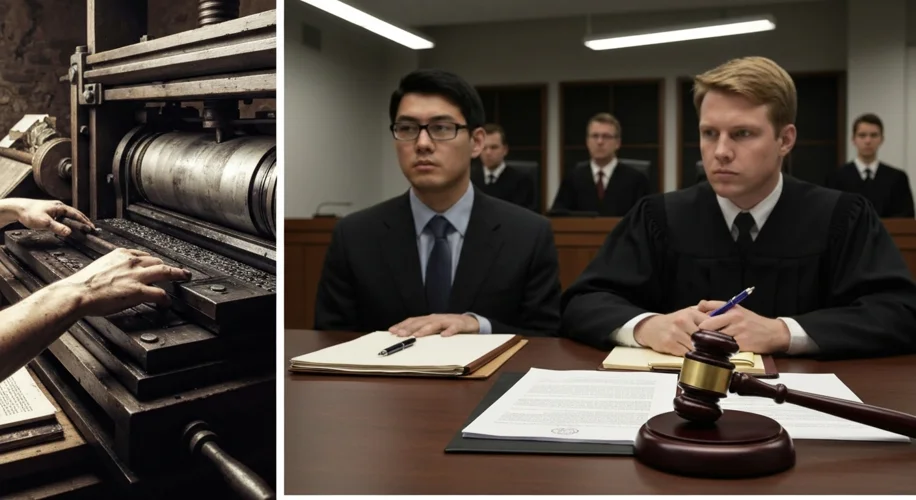In the grand theater of history, reputations are often the most prized possessions, and their destruction, a weapon as potent as any sword or cannon.
The concept of defamation—harm to one’s reputation through false statements—is as old as society itself. Ancient Rome, for instance, recognized offenses against honor and good name. However, the evolution of defamation law, particularly concerning public figures and the burgeoning power of the press, truly took flight with the advent of printing and the subsequent rise of mass media.
Imagine the quill scratching furiously across parchment, a scribe meticulously copying texts, and then, the explosive arrival of the printing press. Suddenly, ideas, both true and false, could spread like wildfire. This democratization of information, while a boon for knowledge, also presented a new arena for slander and libel. Early cases often involved disputes between individuals of standing, where a false accusation could ruin a family’s name and fortune.
One of the earliest monumental clashes between a public figure and the press occurred in the 18th century with the trial of John Peter Zenger. Zenger, the printer of the New-York Weekly Journal, was accused of libel for publishing articles critical of the corrupt colonial governor, William Cosby. The prosecution argued that printing false and scandalous material was a crime. However, Zenger’s lawyer, Andrew Hamilton, famously argued that truth was a defense against libel. This landmark case, though Zenger was acquitted, set a crucial precedent: truth could indeed be a shield against defamation charges. 
As centuries passed and the media landscape expanded, so too did the stakes in defamation cases. The 20th century witnessed a dramatic escalation, particularly in the United States, with the landmark New York Times Co. v. Sullivan (1964) case. This pivotal moment arose when the New York Times published a full-page advertisement soliciting donations for the civil rights movement, which contained several minor factual inaccuracies concerning the actions of the police in Montgomery, Alabama. L.B. Sullivan, a Montgomery city commissioner, sued the Times for libel, claiming the ad defamed him personally, even though he was not named.
The Supreme Court, in a unanimous decision, ruled in favor of the New York Times. Justice William Brennan, writing for the majority, established the “actual malice” standard. This meant that for a public official (and later extended to public figures) to win a defamation case, they must prove that the statement was made with “knowledge that it was false or with reckless disregard of whether it was false or not.” The Court reasoned that a robust public debate was essential for a healthy democracy and that the press needed breathing room to criticize public officials without the constant fear of crippling lawsuits over honest mistakes. This decision was a watershed moment, protecting freedom of the press and allowing for more open criticism of those in power.
However, this protection is not absolute. High-profile individuals and organizations continue to engage in legal battles over their public image. Consider the more recent case involving Dominion Voting Systems and Fox News. Dominion sued Fox News for defamation, alleging that the network spread false conspiracy theories about the company rigging the 2020 US presidential election. The trial revealed internal communications and testimony that suggested some figures at Fox News knew the claims were false but continued to broadcast them to maintain their audience. The case concluded with a settlement, where Fox News agreed to pay Dominion over $787 million, a stark reminder of the financial and reputational consequences of knowingly spreading falsehoods.
These cases highlight a fundamental tension: the need to protect individuals from malicious falsehoods versus the imperative to safeguard freedom of speech and the press. Defamation law continues to evolve, grappling with new forms of media, the speed of information dissemination in the digital age, and the very definition of what constitutes a “public figure.” The history of these high-profile lawsuits is not just a chronicle of legal battles; it is a narrative of society’s ongoing struggle to balance truth, reputation, and the vital freedom to speak.
The legacy of these legal contests shapes our public discourse, reminding us that words have power, and the pursuit of truth, while sometimes messy, is a cornerstone of an informed and just society. From Zenger’s defense of truth in colonial America to the digital-age battles over online information, the quest to define and defend reputation remains a central theme in the human story.

